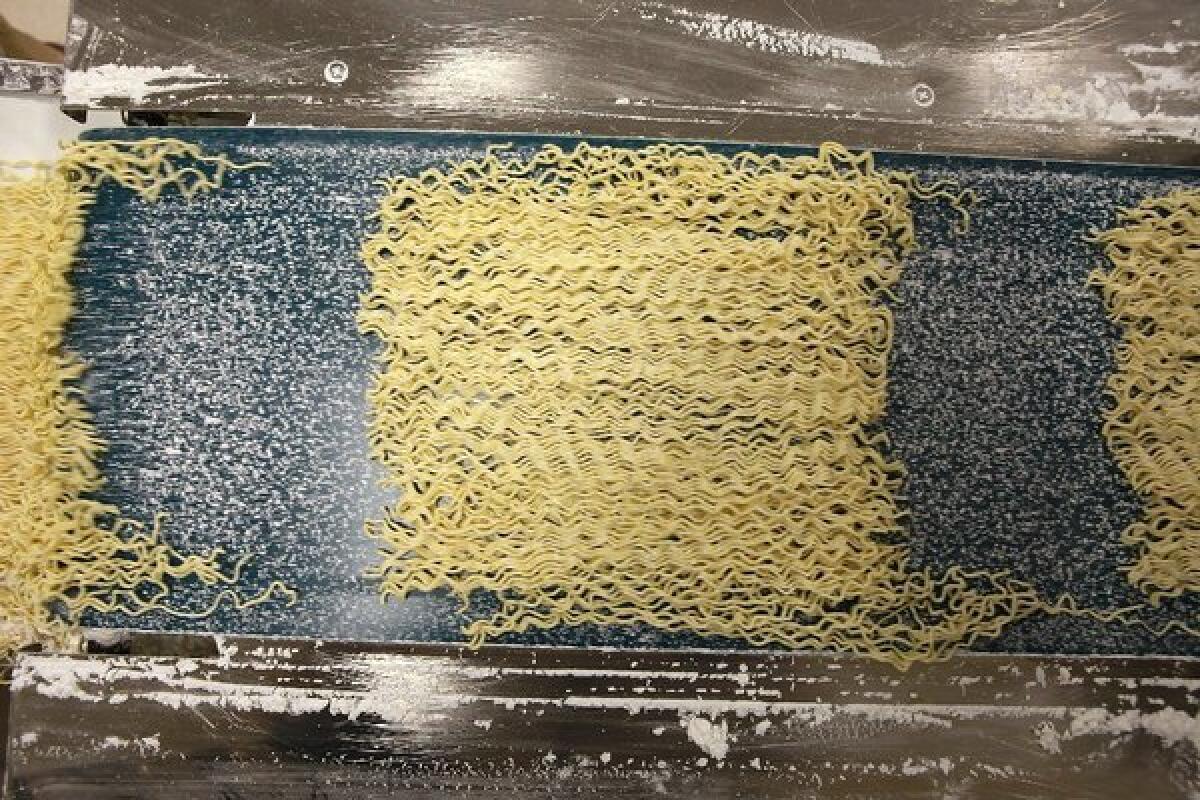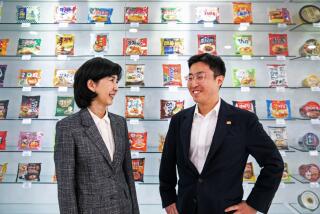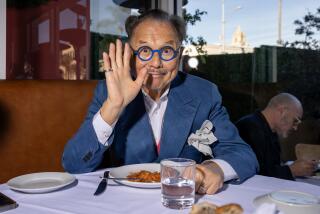Pop-up Ramen Lab: Shigetoshi Nakamura brings the history of noodles to Santa Ana

Ramen Lab will pop up this week at the Playground in Santa Ana, a production by Shigetoshi Nakamura, head of the R&D department at noodle company Sun Noodle (the supplier to a majority of the ramen restaurants in Southern California). He’s also former chef of erstwhile Ramen California in Torrance and opened Ikemen in Hollywood.
Now he and Sun Noodle are at the forefront of a push to spread the gospel of ramen across the country, and all over the world. “Ramen is getting big in South America,” a Sun Noodle VP told the Los Angeles Times in an article earlier this year.
Featured on the menu for the pop-up are Nakamura’s miso ramen, summer chilled ramen and beef and duck mazemen with onsen tamago (slow poached egg). And side dishes include spicy dumplings and tonkotsu risotto, made with the rich pork broth that normally is used for ramen and either Italian arborio or Japanese koshihikari rice (Nakamura says he hasn’t decided yet).
This is your opportunity to try mazemen. Nakamura explains that mazemen was actually created for staff meals in ramen shops. Staff aren’t served the soup for ramen because it’s the most expensive component of the bowl. So they’re served soupless noodles. According to Nakamura, a restaurant called Chin Chin Tei started serving soupless noodles (called abura soba) in 1958. To compensate for the lack of soup, chicken fat was added. Mazemen, popular since the ‘90s at Tokyo shops such as Ivan Ramen, is a bowl of noodles tossed with tare (the additional liquid seasoning added to ramen) and chicken fat.
For Nakamura’s beef and duck mazemen, Sun Noodle developed what it calls temomi noodles, which literally means “hand massage.” The noodles go through a rippled rolling chamber on the production line to produce thinner and thicker segments, to complement the fat and tare, Sun Noodle says.
For his miso ramen (a style of ramen from Sapporo), he adds tare made with white and red miso, Chinese fermented soybeans, red and blue Sichuan peppercorns and a few other secret ingredients. “Once the broth is ready, I keep it on the side and start the assembly of the bowl. In a wok, I sauté ground pork, bean sprouts, Chinese chives, all in lard. I then add a dollop of miso tare ... ladle in a generous portion of my tonkotsu broth and let that boil for a good three minutes. During this time, I drop the noodles into a separate boiling pot.
“I generally use a thicker and chewier noodle. You will notice the color is a sharper yellow and there is also a slight curl to it. The noodle is aged for ideally three days to maximize the glutens, which give you a toothsome feel.”
The final flourish, dropped on top of the noodles, soup and toppings, is a wedge of butter. “You are encouraged to mix it into the soup. Trust me, it’s better with a little butter,” Nakamura says.
The third type of ramen to be served at the pop-up is hiyashi chuka, chilled ramen. “We like to exaggerate the experience with a thicker noodle. Especially when we shock the noodles, the bounce is definitely amplified.”
Ramen Lab at the Playground takes place on Friday and Saturday starting at 6 p.m., with 150 servings per night of half-portion ramen for $10 ($5 side dishes).
The Playground, 220 E. 4th St., No. 102, Santa Ana, (714) 560-4444, www.playgrounddtsa.com.
ALSO:
The L.A. Cronut? Semi Sweet Bakery’s Crullant
Coffee shop Go Get Em Tiger is open on Larchmont
More to Read
Eat your way across L.A.
Get our weekly Tasting Notes newsletter for reviews, news and more.
You may occasionally receive promotional content from the Los Angeles Times.







